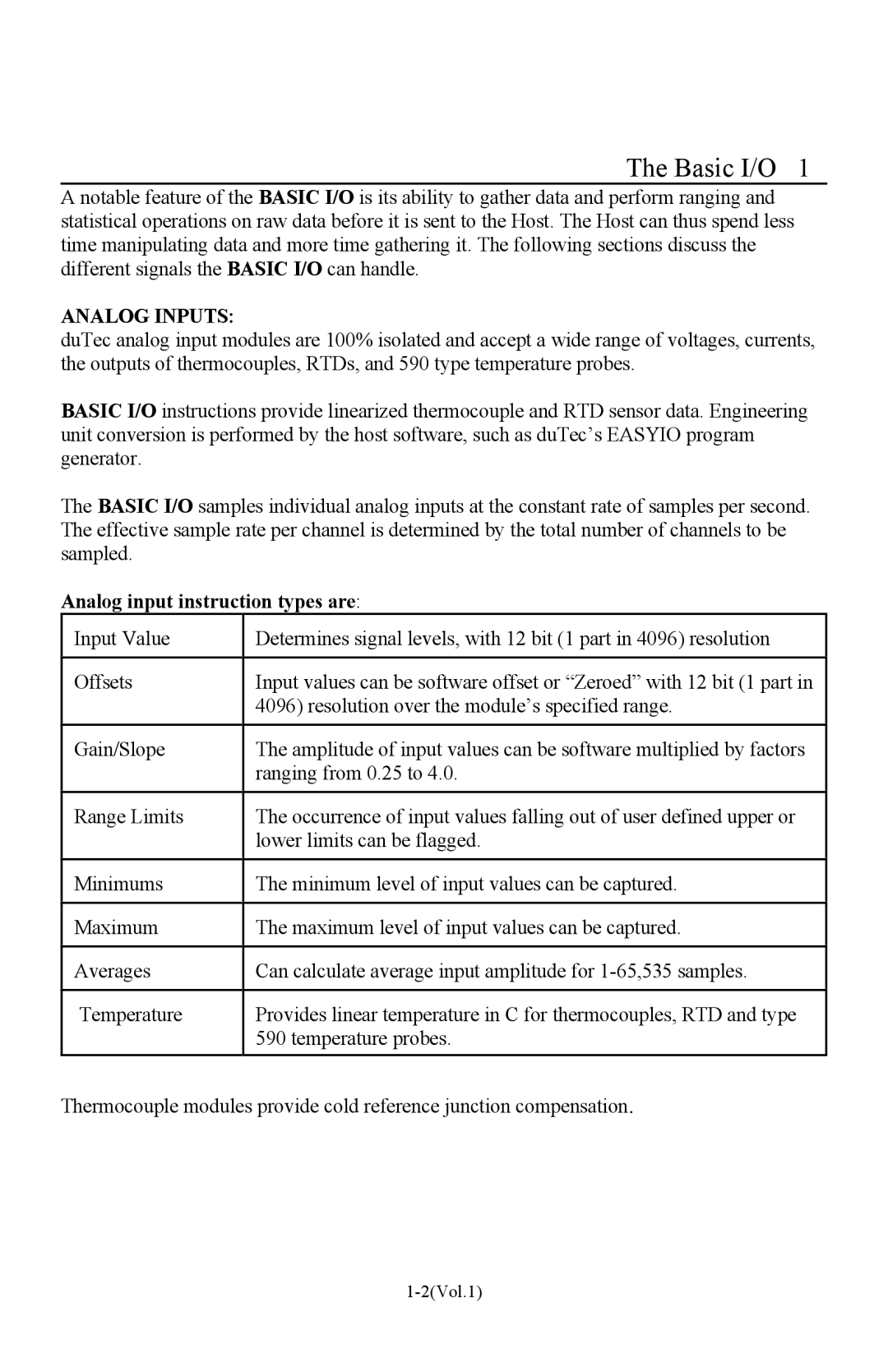The Basic I/O 1
A notable feature of the BASIC I/O is its ability to gather data and perform ranging and statistical operations on raw data before it is sent to the Host. The Host can thus spend less time manipulating data and more time gathering it. The following sections discuss the different signals the BASIC I/O can handle.
ANALOG INPUTS:
duTec analog input modules are 100% isolated and accept a wide range of voltages, currents, the outputs of thermocouples, RTDs, and 590 type temperature probes.
BASIC I/O instructions provide linearized thermocouple and RTD sensor data. Engineering unit conversion is performed by the host software, such as duTec’s EASYIO program generator.
The BASIC I/O samples individual analog inputs at the constant rate of samples per second. The effective sample rate per channel is determined by the total number of channels to be sampled.
Analog input instruction types are:
Input Value | Determines signal levels, with 12 bit (1 part in 4096) resolution |
|
|
Offsets | Input values can be software offset or “Zeroed” with 12 bit (1 part in |
| 4096) resolution over the module’s specified range. |
|
|
Gain/Slope | The amplitude of input values can be software multiplied by factors |
| ranging from 0.25 to 4.0. |
|
|
Range Limits | The occurrence of input values falling out of user defined upper or |
| lower limits can be flagged. |
|
|
Minimums | The minimum level of input values can be captured. |
|
|
Maximum | The maximum level of input values can be captured. |
|
|
Averages | Can calculate average input amplitude for |
|
|
Temperature | Provides linear temperature in C for thermocouples, RTD and type |
| 590 temperature probes. |
Thermocouple modules provide cold reference junction compensation.
